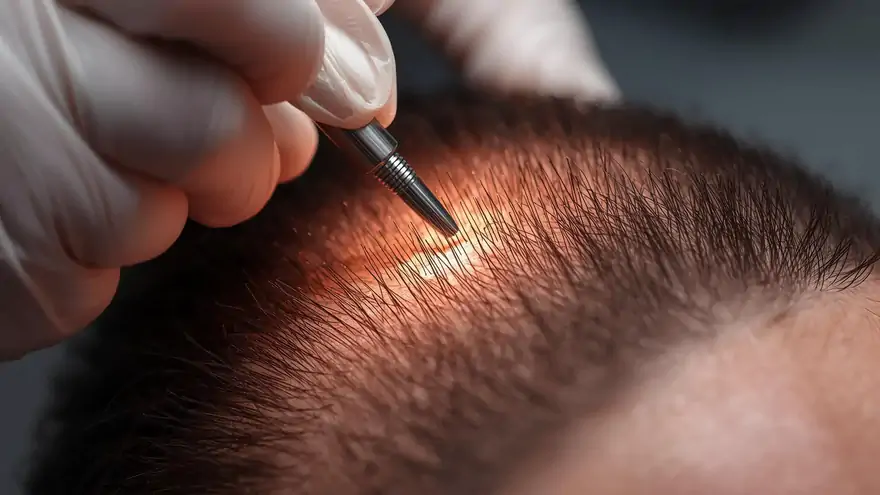What Is Hair Transplantation? The Latest Methods and Success Rates

Hair Transplantation is a microsurgical procedure primarily performed for individuals with permanent hair loss, especially due to androgenetic alopecia. Its goal is to restore hair density and hairline aesthetics close to a natural appearance. Today, the process is based on candidate evaluation, personalized graft planning, proper technique selection, and a meticulous aftercare protocol. The objective is not only to implant hair but also to create a balanced frame that suits facial anatomy and age.
What Is Hair Transplantation?
It involves harvesting follicular units from the donor area (most commonly the nape) and placing them into thinning or bald regions at the appropriate angle, direction, and density. During the procedure, single, double, and triple grafts are distributed with consideration for hair shaft thickness, curl, and the contrast between skin and hair color. When these parameters are properly managed, the transplanted hair blends seamlessly with the surrounding natural hair.
Who Is a Suitable Candidate?
Both men and women with sufficient donor capacity, stabilized hair loss patterns, and no active dermatological conditions are suitable candidates. Hair loss stages are classified with the Norwood scale in men and the Ludwig scale in women. Coexisting conditions such as iron or vitamin D deficiency, or thyroid disorders, should be addressed before surgery. Patients with realistic expectations report significantly higher satisfaction.
Current Techniques
FUE (Follicular Unit Extraction)
The FUE method involves extracting follicular units one by one and implanting them into micro-channels. As it does not require incisions or stitches, it offers faster recovery and minimal scarring. Proper angulation and density ensure a soft, natural-looking frontal hairline.
DHI (Direct Hair Implantation)
The DHI technique, also known as the pen method, combines channel creation and implantation in a single step. This reduces the grafts’ exposure to external conditions, enhancing survival rates. It is especially advantageous for dense hairline design and minor corrections.
Sapphire FUE
With sapphire-tipped blades, smoother and finer channels are created, minimizing tissue trauma and improving recovery comfort. Sapphire FUE is particularly effective for achieving high density in the frontal and mid-scalp areas.
Robotic Approaches
Computer-assisted systems aim to standardize graft extraction, providing speed and consistency in larger cases. However, cost and device availability vary by clinic.
Natural Hairline and Graft Planning
Using single grafts at the frontal hairline, preserving temporal triangles, and replicating the natural whorl at the crown are key to natural results. Graft numbers are planned with donor preservation in mind, leaving reserves for possible future corrections or touch-up sessions.
Pre-Operative Preparation
- Blood thinners and herbal supplements are temporarily discontinued with physician approval.
- Smoking and alcohol should be avoided 5–7 days prior, as they affect microcirculation.
- Dandruff or dermatitis is managed with appropriate shampoos and topical treatments.
- Photographs and dermatoscopic measurements are taken to design a personalized density map.
Surgery Day and First Week
The procedure, performed under local anesthesia, typically lasts 5–8 hours. Mild swelling, redness, and tenderness may appear in the first 24–48 hours. The initial wash is usually performed by the medical team on day 2–3. By days 7–10, controlled washes help remove scabs. During this period, trauma, friction, and direct sunlight should be avoided.
Recovery Timeline: Month by Month
Between weeks 2–8, “shock loss” occurs, which is temporary, as grafts remain beneath the skin. By 3–6 months, fine hairs emerge, with significant thickening between 6–9 months. The frontal hairline usually matures around 12 months, while crown results may take up to 15–18 months. Seasonal changes and individual healing speed can influence this timeline.
Factors Determining Success
- Donor quality: Hair thickness, curl, and color contrast directly influence the perception of density.
- Technique suitability: DHI, FUE, and Sapphire FUE each have specific strengths; combined strategies often yield optimal results.
- Team expertise: Graft survival depends heavily on handling time, moisture, and temperature control.
- Aftercare protocol: Protective care and proper washing in the first two weeks significantly enhance survival rates.
Risks and Safety
Complication rates are low in accredited centers, but possible issues include infection, prolonged redness, folliculitis, or irregularities in the donor area. Proper sterilization, prophylactic antibiotics when indicated, and wound care protocols are determined by the physician. Avoiding scratching, trauma, and improper sleeping positions supports faster recovery.
Post-Transplant Practical Tips
- Sleeping at a 45° angle on the back reduces swelling during the first week.
- If a hat is used, it should be soft, loose, and seamless with minimal contact.
- Follow medical guidance regarding restrictions for sun exposure, sauna, swimming pools, and the sea.
- Limiting caffeine and smoking supports microcirculation and healing.
Frequently Asked Questions
Is the procedure painful?
With local anesthesia, discomfort during the procedure is minimal. Any post-operative sensitivity can be managed with prescribed painkillers.
Will there be visible scars?
FUE and DHI methods typically leave very minimal scarring. Even with short hairstyles, most patients resume social activities quickly.
Do transplanted hairs fall out?
Donor hairs are genetically resistant to hair loss. Shock loss is temporary, after which permanent hair growth begins.
When can normal activities and exercise be resumed?
Light walking is possible within a few days. Intense workouts and contact sports require physician clearance and adherence to the recommended timeline.
Choosing the Right Clinic
- Evaluation and written treatment planning performed by a qualified physician
- Strict sterilization protocols, photographic case records, and realistic expectation management
- Techniques and equipment tailored to individual needs
- Accessible follow-up and post-operative care appointments
This content is provided for informational purposes only and is not a substitute for medical advice. Always consult a dermatologist or plastic surgeon experienced in hair restoration to determine the most appropriate approach for your personal condition.
